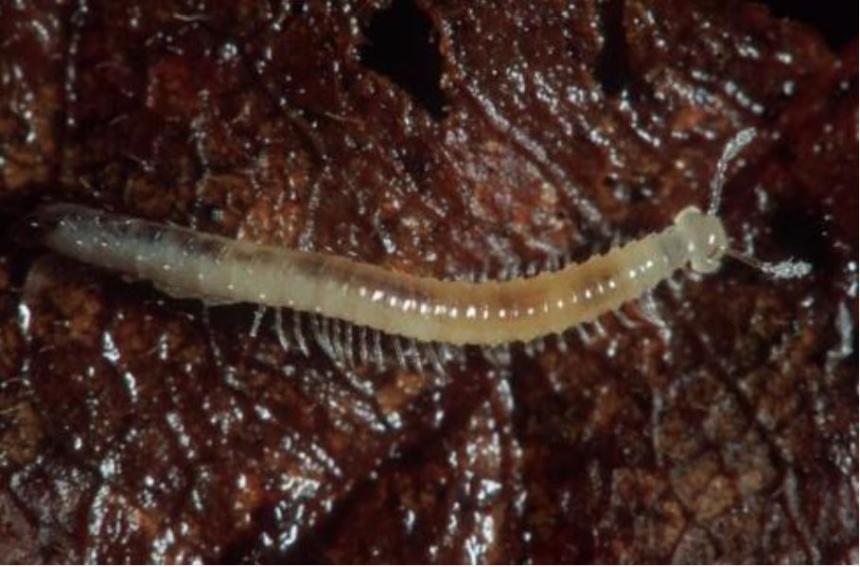Very little is known of this cryptic species, which was discovered and identified in 2004. It has only been detected in mature second-growth forest within a small area in Thurston County. Population size and trend of this species is unknown.
Description and Range
Physical description
The Leschi’s millipede ranges in length from 0.14 inches (3.6 millimeters) to 0.17 inches (4.2 millimeters). Its elongated body is made of multiple segments, each bearing two pairs of legs. It is the only representative of its family in North America; core distribution of species belonging to the family Anthroleucosomatidae is in the Balkans, ranging east to the Caucasus, Iran, and central Siberia.
Ecology and life history
This species was discovered and designated as a new genus and species in early 2004. No study has been conducted on any aspect of its life history. Specimens were collected in leaf litter along a steep, east-facing slope in the lower Nisqually River Valley. The site was vegetated by mature second-growth forest dominated by bigleaf maple, red alder, western red-cedar, and western swordfern. It appears to be limited to leaf litter in forest bottoms and perennial springs.
Geographic range
Six males and seven female specimens were collected in February 2004 at and close by McAllister Springs near Olympia, Washington. The collection area is located upstream of the Nisqually Wildlife Refuge and just downslope of a housing development situated on a bluff. More recent surveys at the type locality detected several individuals. Actual total distribution of the species is unclear. It has not been detected elsewhere, but the species is cryptic and may be more widely distributed.
Climate vulnerability
Sensitivity to climate change
This species was recorded in Washington in 2004. There is almost no information available about its life history characteristics and no information available regarding it sensitivity to climate change.
Exposure to climate change
- Not applicable - no information
Conservation
Conservation Threats and Actions Needed
- Resource information collection needs
- Threat: Only a handful of individuals have been found in a localized area with a specific combination of habitat features.
- Action Needed: Need to establish baseline survey effort beyond the current known locations in areas with similar habitat features.
- Fish and wildlife habitat loss or degradation
- Threat: Development on bluff above site location in Nisqually Valley. Area in which this species was found is probably private land.
- Action Needed: Investigate possibility of extending area of protection. Discovery sites are adjacent to the Billy Frank Jr. Nisqually National Wildlife Refuge.
Resources
References
Shear, W. A. and W. P. Leonard. 2004. The millipede family Anthroleucosomatidae new to North America: Leschius mcallisteri, n. gen., n. sp. (Diplopoda: Chordeumatida: Anthroleucosomatoidea). Zootaxa. 609:1-7. http://www.mapress.com/zootaxa/2004f/z00609f.pdf
W. Leonard, WSDOT, personal communication
K. McAllister, WSDOT, personal communication
Other resources
